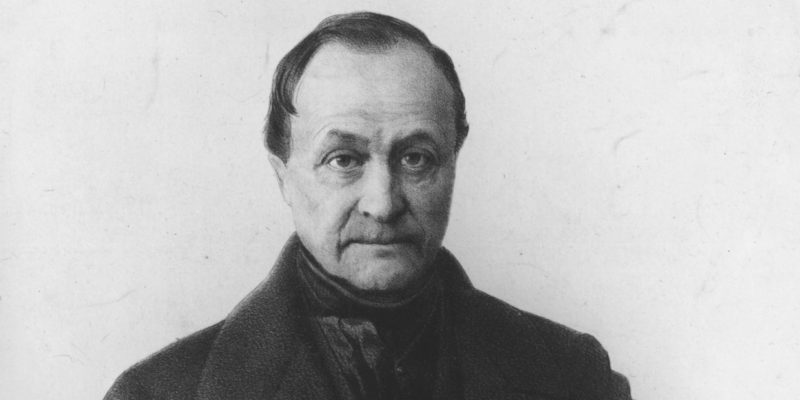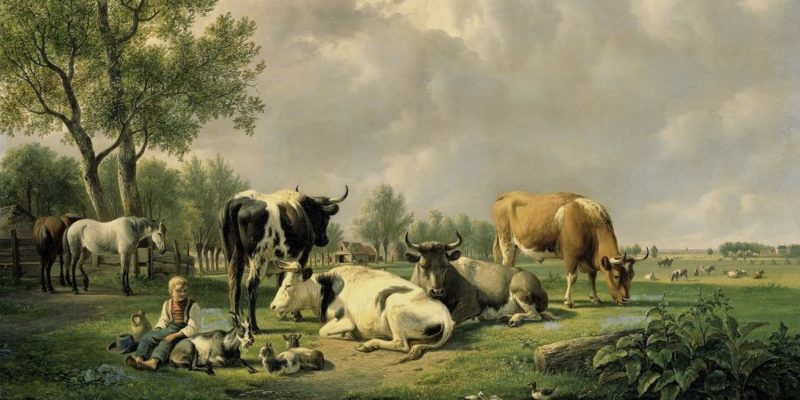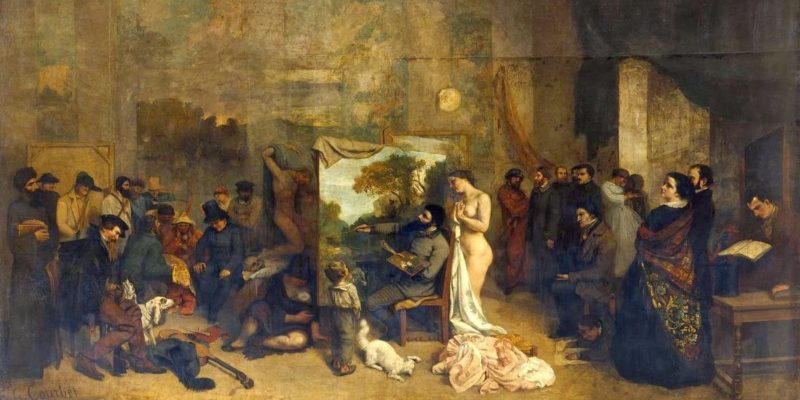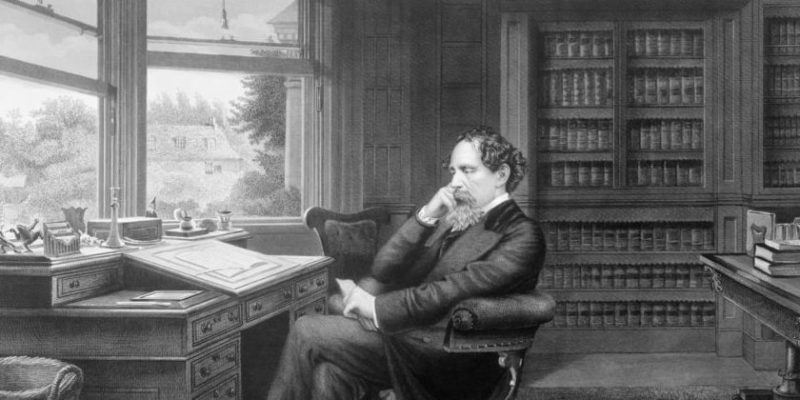We explain what literary realism was, how it originated and its classification. Also, what are its characteristics and authors.
What is literary realism?
Literary realism was a literary movement of the second half of the 19th century . It meant a break with the ideological, formal and artistic precepts of romanticism . That is why it is considered an alternative to romantic renewal or post-romanticism.
Realism was not exclusive to literature . In reality, it was a philosophical and aesthetic movement that encompassed various arts and currents of thought . In all of them there is a certain fascination with scientific progress.
Following the spirit of the time, realism was interested in objective and verifiable knowledge . In this way, an attempt was made to make the work of art a kind of document or testimony of the society in which it arose.
In this sense, realism is heir to the precepts of the Enlightenment . It resumes its emphasis on reason and thought as fundamental tools to direct the steps of the species and the ultimate value of the human condition.
Historical context of literary realism

The first half of the European 19th century witnessed the entrenchment of the bourgeoisie as the dominant social class .
Thus, the new urban society was formed , a consequence of the Industrial Revolution that began in the previous century.
Romanticism had begun the decline of its long aesthetic and philosophical period.
Now the public was more interested in the present and the immediate , instead of the exotic or ancient panoramas offered by the romantics.
Journalism , Auguste Comte's positivism, and Darwin 's evolutionary theory spawned a new sense of faith in human reason . The progress of civilization was entrusted to scientific advances .
Realism in literature echoed these sentiments beginning in the second half of the 19th century. He focused on contemporary society and its deep processes of change, among which were the Marxist and workerist political tendencies , for example.
How did literary realism originate?
The term "realism" was first coined in 1825 , applied to the Romantics' imitation of nature and the descriptive detail of some of their novelists. However, soon it was preferred to designate something very different: the artistic works that sought to leave a testimony of their time.
In 1827, a group of French painters took up the term to oppose it to romanticism. In 1856, a magazine entitled Realismo appeared , where the new movement was described as "...the exact, complete, sincere reproduction of the social environment and the time in which we live."
The Bourgeois Revolution of 1848 is considered as a triggering event for realism . To some extent realism was the equivalent of positivism in philosophy .
Its first authors were Honoré de Balzac and Stendhal. Throughout the century it crystallized in his greatest works, also by other authors, in England , Germany and later in Spain .
Fundamental Traits

Literary realism assumed the following postulates:
- The reproduction of social, political and economic reality, taking as a model the scientific methods of observing nature. Writers were to study society as a doctor studies the human body .
- Writers stop focusing on themselves and their sensitivity, focusing on the problems around them.
- It is committed to a simpler, sober, precise style, in which the reproduction of colloquial speech could have a place.
- Detailed, meticulous descriptions , with long enumerations and very specific nouns, in long paragraphs and provided with a lot of subordination. An “invisible” language was aspired to : objective, understandable by all, that did not draw attention to the author's style.
- Preferential use of the omniscient narrator.
- Abundance of examples with which the author "explains" the evils of the time or in which he embodies them. Thus, a very usual set of realistic characters appears, usually linked to the middle and lower classes.
Opposition to Romanticism

Romanticism had emerged in the eighteenth century as an aesthetic and philosophical movement opposed to the rationalism and cosmopolitanism of the Enlightenment. It proposed a subjectivist and emotional perception of the world, as well as the exaltation of the inner world of the artist.
Romanticism was nationalistic, individualistic and traditional . Instead the Enlightenment was cosmopolitan, sociological and rationalist. In the second half of the 19th century, realism took up the postulates of the Enlightenment, but mediated by the light of progress and scientific development.
Realism rejected the sentimentality and baroque style of the Romantics . He also avoided fantasy literature and stuck to reality as believably as possible. The philosophical postulates that he held lasted until well into the 20th century .
Realistic Novel
The realistic novel or also bourgeois novel is the realist genre par excellence , the most cultivated by the great European writers of the 19th century. They were voluminous novels, with many chapters. The number of publications of novels was much greater than that of books of short stories and poems .
Novels often featured a large number of main characters . Thanks to this peculiarity, the first polyphonic novels were created. Each character usually represented some social trend of the time.
Latin American Realism

Realism arrived in Spain at the end of the 19th century. Due to its influence, it also developed in Latin America . He quickly turned to a school known as costumbrismo , which is especially interested in the social and cultural portrait of the young peoples of the New Continent.
In costumbrismo the political phenomena and the revolutions of the end of the 19th century and the beginning of the 20th have a special place. Novels would appear with a strong popular presence or conflicts between social and cultural classes .
Examples of this type of literature are the rioplatense gauchesca, the indigenous novel, the novels of the land or agrarian novels , and the novels of the Revolution, especially the Mexican one.
Magical realism

Magical realism is a literary movement typical of Latin America . It emerged during the 20th century and its most famous exponent is Gabriel García Márquez , whose predecessor was Alejo Carpentier with his Real Marvelous.
It is characterized by a realistic literary perspective, that is, a descriptive narrative , which leaves aside subjectivism . However, absolutely fantastic events are told in it, that is, incredible things from the most realistic and everyday point of view possible.
This perspective seemed to portray the conditions of life on the American continent better than European realism . In other words, even in its magical aspect, it more eloquently reflected the fertile cultural mixture that characterizes Latin American cultures .
Decomposition of literary realism
Realism came to an end at the beginning of the 20th century , when its postulates and formulas began to become repetitive. Then new movements appeared, precursors of the artistic explosion that would be the avant-garde in the first half of the 20th century. They stand out from them:
- Naturalism . The maximum exaggeration and systematization of realistic precepts end up turning the novel into a social document, a snapshot of the time, especially with regard to the marginal sectors.
- Spiritualism. Fleeing from realism, he tries to reinstate everything superseded by it: religion, spirituality, the traditional and the peasant world.
- Post-romanticism. An aspect that seeks to revitalize romanticism by mixing it with realistic postulates, without overcoming the contradiction between both trends.
- psychological novel. The abundant and dense exterior descriptions of realism pass here to the interior of the characters, changing the omniscient narrator for the interior monologue, focusing on the minds of the characters only.
Important authors of literary realism

Some of the most famous authors of literary realism were:
- Honoré de Balzac (1799-1850), Stendhal (1783-1842), and Gustave Flaubert (1821-1880), all three French.
- The Englishmen Charles Dickens (1812-1870) and William Makepeace Thackeray (1811-1863).
- The Spaniards Benito Pérez Galdós (1843-1920), Leopoldo Alas (1852-1901) and Emilia Pardo Bazán (1851-1921).
- The Russian Fyodor Dostoevsky (1821-1881), founder of the psychological novel, and also Leo Tolstoy (1828-1910).
- Americans Mark Twain (1835-1910) and Herman Melville (1819-1891) from Moby Dick .
Great works of literary realism
Some of the most famous works of this movement were:
- Madame Bovary by Gustave Flaubert.
- Meow by Benito Pérez Galdós.
- Anna Karenina by Leo Tolstoy.
- Papa Goriot by Honoré de Balzac.
- Moby Dick de Herman Melville.
- Stendhal red and black .
- Crime and punishment of Fyodor Dostoevsky.
Passionate about understanding and contributing to a world that does not stop changing. New forms of Work, Sustainability and Technology. For many years he has worked as a creative for large international companies. He has a Ph.D. in information technology and he has been doing quantitative research in the interdisciplinary areas of information systems, cyber security, data analytics and artificial intelligence. He continue to look for creative solutions through technology to help companies to be more humane and sustainable..
Leave a reply
Your email address will not be published. Required fields are marked *Recent post

Sport: What Is It, Types, Risks, Features, Characteristics and Examples

Dogs: Emergence, Features, Characteristics, Feeding and Breeds

Story: Definition, Elements, Structure, Features and Characteristics

